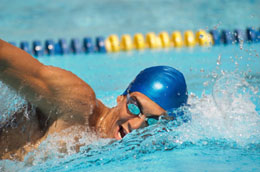Fishing Articles : Did You Ever Chum A Pollock?
Years ago, I had the honor and privilege to fish with Capt. Charles Fischett on his boat the Three Daughters. My father and he were good friends and fishing buddies
and I would often join in with the crew for some memorable fishing experiences. What a crew it was, my father Al Lorenzetti Sr., Larry Christie, Bill Koehler, Paul Percodani, Arty Bethel and many others on various occasions. A welcomed guest on many outings was the retired but most revered old timer of salt water angling in the northeast, Capt. Herb Fogarty, captain of the Bojean. Back in the late sixties and early seventies, it was this captain and crew that taught me much of what I know about fishing, especially wreck fishing.
In those days, wreck fishing was restricted to only those individuals who were tried and true seamen. Loran existed, but only in its most crude form utilizing "A band" and manually operated AP-9 receivers. On the best of days, the closest fix one might hope for was perhaps one quarter of a mile. Needless to say, good navigation, extensive search patterns, knowledge of bottom contours and a little luck were required to finally locate and set up on a wreck, especially those far offshore. The rewards for this effort however, were fantastic! Because of the difficulty in locating such wrecks, when finally located, they were essentially virgin, and loaded with fish. On many occasions we quit fishing when our arms were tired or we simply said we have enough fish, usually cod and pollock. Of all the types of fish we caught on the wrecks, pollack were the most fun. A cod is a bulldog and really fine table fare but nothing can compare to the first run of a pollock caught in deep water. Their nickname is "Boston Blue" due to a similarity in how they fight and the methods used to catch them. Can you imagine doing battle with a thirty to forty pound bluefish! The initial hit and run is awesome, it can make you weak in the knees as it often did to me.
Pollock respond well to deep jigging above the superstructure of the wreck, or to baits suspended above the feeding zone of the cod and bait stealing bergalls. Do not hesitate to dangle a baited hook ten to twenty feet above the bottom as it will usually be picked up by a roving pollock. The best part of finding a wreck with a good population of pollock residing nearby is the possibility of chumming the school right up to the back of the boat. Pollock will respond to a chum line of ground bunker just as well as a school of bluefish.m In order to pull the pollock off the wreck with the chum, it is necessary to position the boat up-current from the wreck. If you are anchored directly above the wreck as is usual for cod fishing, it will require a repositioning of the anchor. The goal is to have the chum settle to the wreck so that the pollock have a trail to follow to the boat. This process usually will take about one half hour in order to attract the fish to the boat, if they are going to respond to the offering. If there is not a response after a reasonable time, the anchor line can simply be paid out to let the boat resettle above or at the edge of the wreck to resume codfishing.
The fishing technique utilized for this type of fishing would be similar to chumming bluefish except the wire leaders can be done away with as pollock are essentially toothless. Pollock are however somewhat more line-shy and definitely more picky about what they will accept as a hook bait. I am convinced however that a pollack cannot pass on a whole baby squid. I suggest the kind sold in the five pound boxes in
the supermarket, usually labeled as California calamari. Light tackle is sporting and makes dropping back the bait into the chum slick more manageable. A Penn "Squidder" or possibly the new 310 GTi reel on a matching rod like the Penn Power Stick PC-3601L would be ideal. Conventional revolving spool reels are best suited for this type of fishing. A 5/0 to 7/0 short shank hook tied directly to the line with a clinch or palomar knot is most convenient. Perhaps a small rubber core sinker might be required to keep the bait uniformly descending with the chum.
The most successful approach is to slowly let the bait drift back with the current. If the fish are coming to the boat, the first hit may occur at a fairly good distance back, possibly 100-150 feet or even more. Hopefully the fish will then move much closer to the boat attracted by the chum and will probably settle in about fifty feet back. If they do, this will be the ultimate pollock catching experience. Do not be afraid to feed out a lot of line in trying to find the first fish. Eventually your line should end up near the wreck and you may be able to hook up with cod or pollock right from the wreck itself. On most occasions when this has happened, the combination of close proximity to the wreckage, and lots of stretch in the line results in fish getting into the wreck and breaking off. On some occasions it did seem however, that when a fish was pulled from the wreck, the rest of the school followed the hooked fish to the boat. It is a worthwhile policy to let out a good piece of line in trying to get things going. The only disadvantage in attempting this type of fishing these days is the overfished condition of many of the wrecks. Because of this, those wrecks that lie farther offshore will be better choices as they are fished less. Pollock themselves tend to favor fairly deep water. I would recommend wrecks such as the Virginia, Bidivend, West wreck, or the Texas Tower or others in the 150-200 foot range. Early spring, around April and into May has usually been the best time of year but they can be caught at anytime on those wrecks in the deeper water.
As is the case with most fishing experiences, a little extra effort and knowledge goes a long way. Having to make an an chor adjustment when settled on a deep wreck is not what I would call fun, but if you don't give it a try, you may miss one of the best fishing experiences of your life!
Good Fishing, Capt. Al Lorenzetti ?Al Lorenzetti 1990
Fishing Articles : Carolina Rig Fishing
Fishing Articles : Fish Attractants


